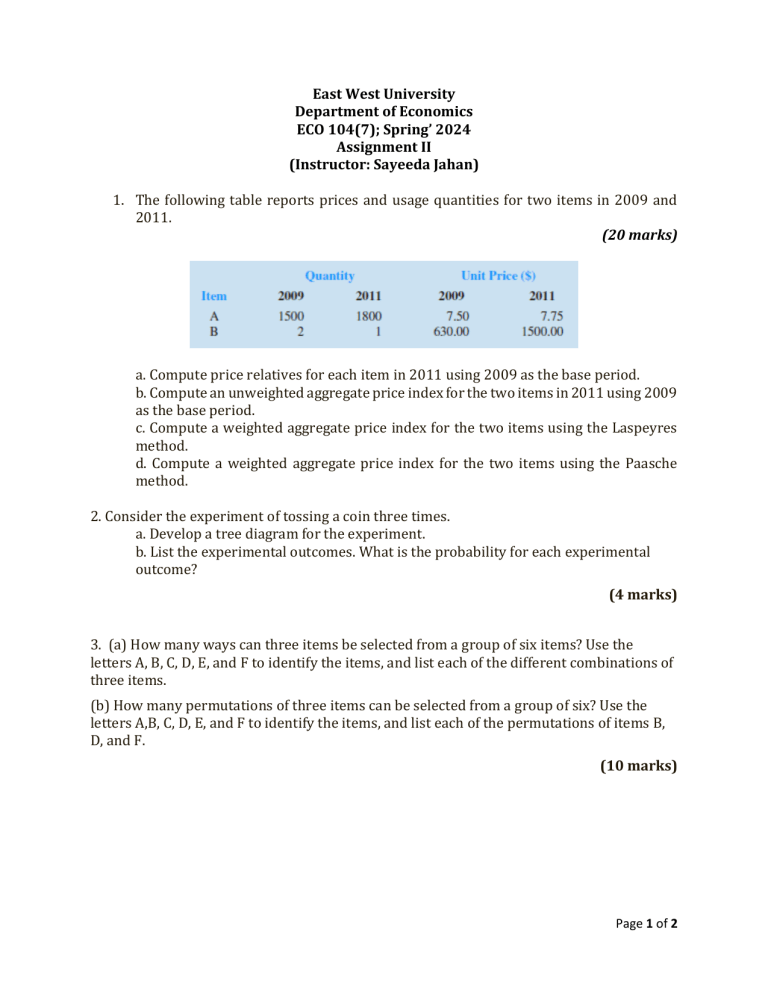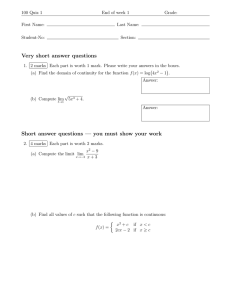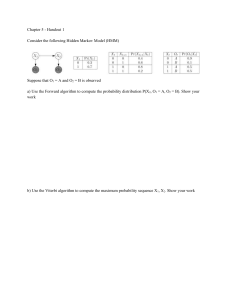Economics Assignment: Price Indices, Probability, Combinations
advertisement

East West University Department of Economics ECO 104(7); Spring’ 2024 Assignment II (Instructor: Sayeeda Jahan) 1. The following table reports prices and usage quantities for two items in 2009 and 2011. (20 marks) a. Compute price relatives for each item in 2011 using 2009 as the base period. b. Compute an unweighted aggregate price index for the two items in 2011 using 2009 as the base period. c. Compute a weighted aggregate price index for the two items using the Laspeyres method. d. Compute a weighted aggregate price index for the two items using the Paasche method. 2. Consider the experiment of tossing a coin three times. a. Develop a tree diagram for the experiment. b. List the experimental outcomes. What is the probability for each experimental outcome? (4 marks) 3. (a) How many ways can three items be selected from a group of six items? Use the letters A, B, C, D, E, and F to identify the items, and list each of the different combinations of three items. (b) How many permutations of three items can be selected from a group of six? Use the letters A,B, C, D, E, and F to identify the items, and list each of the permutations of items B, D, and F. (10 marks) Page 1 of 2 4. Consider the experiment of rolling a pair of dice. Suppose that we are interested in the sum of the face values showing on the dice. a. How many sample points are possible? (Hint: Use the counting rule for multiplestep experiments.) b. List the sample points. c. What is the probability of obtaining a value of 7? d. What is the probability of obtaining a value of 9 or greater? e. Because each roll has six possible even values (2, 4, 6, 8, 10, and 12) and only five possible odd values (3, 5, 7, 9, and 11), the dice should show even values more often than odd values. Do you agree with this statement? Explain. (10 marks) 5. The prior probabilities for events A1, A2, and A3 are P(A1) = .20, P(A2) = .50, and P(A3) = .30. The condit-/ional probabilities of event B given A1, A2, and A3 are P(B ∣ A1) = .50, P(B∣A2) = .40, and P(B ∣ A3) = .30. a. Compute P(B ∩ A1), P(B ∩ A2), and P(B ∩ A3). b. Apply Bayes’ theorem, equation (4.19), to compute the posterior probability P(A2 ∣ B). c. U se the tabular approach to applying Bayes’ theorem to compute P(A1 ∣ B), P(A2 ∣ B), and P(A3 ∣ B). (6 marks) Best of luck! Page 2 of 2




